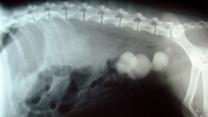
Urine biomarker and reprofiling drug for cystinuria treatment and/or relief
Problema a Solucionar
One in 7000 people suffer from Cystinuria, and 94% of the patients will develop cystine stones, 40% of them during the pediatric age. Renal colic produced by cystine kidney stones is very painful. Currently, cystine lithiasis onset can only be determined by X-rays or TAC. A methodology to easily determine the onset of a lithiasic episode before the colic would facilitate patient management. Moreover, current treatments for cystine lithiasis show important side effects, forcing the discontinuation and the need of renal interventions to remove the cystine stones.
Aplicaciones
- When determined in routinary urine analysis, the biomarker could be used to monitor the onset of cystine lithiasis before its detection by other means or before renal colic episode.
- The principal goal of the therapy with the compound in Cystinuria treatment is to avoid the formation of cystine stones, or at least, to delay its onset. This compound could be used, either since Cystinuria diagnosis or after stone removal by renal interventions, to prevent stone formation. Due to its lack of toxicity, it could be chronically administered.
Estado de la tecnología
Contexto
Cystinuria is a rare disease with an estimated prevalence of 1/7000 newborns. It is responsible of about 2% of all renal lithiasis and about 8% in the pediatric age. Approximately 94% of cystinuric patients develop cystine stones and the recurrence of lithiasic episodes is high, ending in most of the cases with renal failure. Current adherence to available treatments for cystine lithiasis is low due to the secondary effects of the treatments used. Frequently, cystine stones have to be removed by different urologic interventions; these continuous interventions diminish patients’ life-quality.
Tecnología
Autores
López de Heredia M (CIBER), Nunes V (IDIBELL – UB)
Technology Readiness Level
TRL 3
